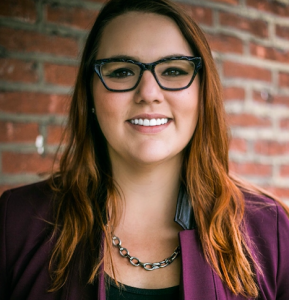How do you align community engagement to institutional planning and initiatives?
How do you create systematic processes for collecting community engagement data? What data do you need regarding your partnerships?
Once you have an inventory of the various community partnerships at your institution, how do you use the information?
These questions are just a few that plague Community Engagement Professionals (CEPs) and higher education in general, regardless of institution type. In an effort to shed light upon these questions and the practice of aligning community engagement initiatives and data collection across their institutions, Drs. Kristin Norris and Jessica Mann shared their insights and experiences during a webinar featuring their peer-reviewed workshop first presented at the Society for College and University Planning (SCUP) 2019 conference in Seattle. Following the webinar we debriefed with Dr. Norris and Dr. Mann who shared their thoughts about community engagement as a strategy for institutional success.
Q: Why should institutions care about this now?
There is currently a growing distrust in higher education (Pew Research Center). And admittedly, we need to do a better job of telling our story of impact externally and how that aligns with the things we care about (i.e., strategic plans) internally. We must be able to effectively show how our work – faculty research, student learning, etc. – addresses societal challenges on both a global and local scale and how community engagement is a strategy through which our institutions achieve success.
Q: What are some opportunities for reframing community engagement as a strategy for institutional success?
Changes in leadership at the institutional, school-, and department- levels often allow CEPs to reframe and realign leadership’s thinking about community engagement. It is highly likely that your institution and any school, office, department, etc. within it is involved in community one way or another. CEPs can’t be afraid to get in there and promote engagement as a primary way in which their institution achieves success. It must be tracked, measured, and publicly shared!
Further, identifying the current priorities of your institutions as laid out by your strategic plan, mission, etc. and reframing the conversation around how engagement helps your faculty and staff achieve these goals is paramount. Think about what social issues and/or community problems your campus is working to address. How might these priorities be addressed through current initiatives on campus (e.g., general education courses, core learning outcomes, high-impact practices or engaged learning opportunities, research and creative activity)?
When institutional leaders discuss the need to achieve certain goals, benchmarks, or make progress on specific priorities, identify how community engagement data can help tell that story or inform their strategy. For example, when Duquesne University approaches local foundations for funding of institution-wide initiatives and programs, we use community engagement data to articulate our commitment to the community and its well-being, thus arguing for how support of our institution translates to support for the region at large. And at IUPUI, when the campus wants to increase opportunities for global learning that’s local, we use community engagement data to identify existing faculty and curricular or co-curricular experiences related to certain populations (e.g., immigrants, refugees), intended outcomes (e.g., cultural awareness), or certain community organizations. Before IUPUI had Collaboratory, we only had data on community engaged learning courses and their partners which resulted in a very limited understanding.
Q: What important questions should CEPs ask when they begin to take steps to collect data and measure institutional community engagement?
Who is involved with community engagement on your campus (even if that’s not what they call it)? What offices, centers, and people interact with external organizations, agencies, populations or issues? Then, from there….
- What questions are they trying to answer? What stories of impact do they need to tell?
- What, if any, data are they currently collecting? How are they using it?
- How would they know if their engagement is achieving the intended outcomes?
The point we are trying to make is this – in order to demonstrate the extent to which community engagement is a strategy for institutional success, we need to recognize and value all of the ways the institution is working in or with the community. CEPs can be thought-leaders and conveners, but the real value in tracking community engagement is the use of the data beyond the immediate needs of CEPs.
Q: What “counts” as community engagement?
We tell folks at our institutions, if you can identify a population, community partner, agency, organization, or individual working with your institution to improve society in some way, it “counts” and should be tracked!
We say that because Collaboratory captures a spectrum of engagement (e.g., outreach programs, sustained initiatives, volunteerism, research and creative activity, course-based experiences, events, etc.). Once we have the data, we can unpack the extent to which it is mutually-beneficial and reciprocal. This allows us to meet faculty/staff where they are, leverage a campus-wide definition, and invite dialogue with people who have historically felt as though their work in partnership with the community didn’t meet a certain criteria (e.g., STEM disciplines or professional programs).
Q: What data has traditionally been tracked to measure and understand community engagement?
Traditionally, institutions have tracked the “Fabulous 5”. Data that tells us about the “what” of engagement:
- Number of Hours
- Number of Students
- Number of Faculty
- Number of Community Partners
- Number of Courses
But we want to understand the “how” and the “why” – not just the “what”. Campus leaders want to know how and why our institutions achieve their institutional mission and goals through community engagement. Institutions want to illustrate how students, faculty, and staff are working across all parts of campus to address social issues. This is why a product like Collaboratory, that focuses on the how and why of engagement, is helpful. By looking at the engaged activity as the central component and connecting multiple data points (number of students, courses, community partners, etc.) to the activity itself, we can begin to see how our engagement aligns with our institutional mission and goals and is advancing institutional priorities.
Q: What existing sources of data can be leveraged to supplement community engagement data? From where can community engagement data be “mined”?
Data exists everywhere throughout an institution! In our work we have utilized data from the following places to supplement community engagement data and reporting:
- Academic Affairs
- Faculty reporting tools like Digital Measures, Activity Insights, etc.
- Faculty research in and with community
- Student co-curricular transcripts
- Clinical placement sites
- Internships
- Canvas or Blackboard
- Faculty reporting tools like Digital Measures, Activity Insights, etc.
- Co-Curricular Service
- Student volunteer tracking software like Campus Labs, Give Pulse, or NobleHour
- Greek life
- Student organizations
- IRB applications
- Faculty research that engages community
- Registrar (ex. SL/CE tagged courses)
- Contracts and Grants (ex. MyRA)
- Faculty development programs and awards
- Applications for grants, awards, etc.
- Marketing and Communications
- Newsletters
- Blogs
- Websites
Q: As a Community Engagement Professional, what is one thing that would help you do your job better?
Jessica: Just something small … like a more nimble and responsive higher education system. Cultural change takes time, I know, but I can’t help but dream about a day when as a field, we have a shared understanding of the public purpose of higher education and the way that community engagement can help institutions meet that purpose.
Kristin: Better alignment of promotion and tenure policies to things that contribute to community impacts (at the same level that we value funding, publications, and citing others within the ivory tower). But, that is really hard and would require another blog so I will offer an alternative that I think is more realistic that could support systemic change — creating positions (like mine) in order to build capacity for institutions to LEVERAGE community engagement (through data) and involve students in the process which fosters the next generation of community engaged scholars and practitioners. My role is an interesting blend of institutional research, institutional effectiveness, CEP work, and marketing/communications.
Meet Your Presenters:

Kristin Norris, Ph.D. is the Director of Assessment for the Office of Community Engagement at IUPUI. Kristin works with stakeholders (internal and external) to track community-engaged activities to conduct assessment, evaluation, and research that transforms higher education and demonstrates how IUPUI’s community engaged activities (e.g., programs, pedagogies, research, initiatives) support the institutional mission, demonstrate progress toward the strategic plan, and inform decision making.

Jessica Mann, Ph.D. is the Director of the Center for Community-Engaged Teaching and Research at Duquesne University. She has extensive experience with developing, implementing, and evaluating service-learning and community engagement programming in both the academic and co-curricular realms. Jess’s career and research has focused on exploring the ways in which institution’s programs, policies, and procedures respond to their larger civic and social responsibilities.
Additional Resources:
Weiss, H. A. & Norris, K. E. (2019). Community engagement professionals as inquiring practitioners for organizational learning. Journal of Higher Education Outreach and Engagement, 23(1), 81-106.
Pew Research Center. (2019, August 19). The growing partisan divide in views of higher education.
Mapping Engagement: IUPUI Leverages Collaboratory Data (2019 June 10).
Recorded Webinar: Align, Support, and Measure Your Institution’s Community Engagement.
